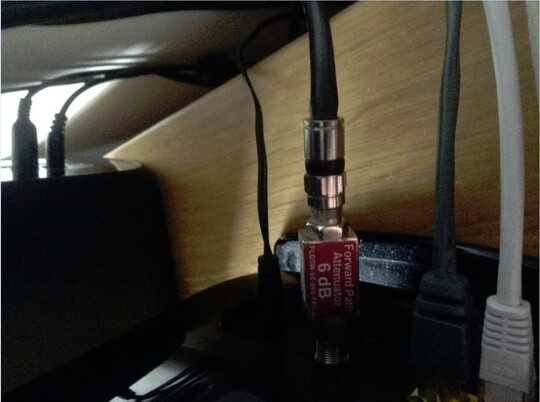More specifically than the other answers, the most common type of "coaxial" cable is called RG-6. The accepted answer covers the ancillary question of the boxes, so I will focus on the cable.
Coaxial cable means there are multiple conductors in the cable, and they share a common center (coaxial -> co-axial -> share an axis). This is in contrast to other common types of cable where conductors might be side by side, e.g. most power cables, RCA cables, etc.
RG-6 is a specific category of coaxial cable with a single data wire in the center, plastic insulation surrounding that, and one or more metal shields around that layer which are grounded to reduce signal interference. Typically, RG-6 in North America is either dual shield or quad shield, with quad shield providing a better signal.
RG-6 is really good at carrying signals over long distance, outpacing CAT-5(e) and CAT-6. However, it has less bandwidth. This is why a home network will use RG-6 to connect to the cable company's fiber node (maybe one per city block or two), but use CAT-5e, CAT-6, or WiFi for the home network. Outside the home you need distance, inside the home bandwidth is more important for streaming data between devices.


1As there are a lot of connection cables, you should post a link to a picture. – jcbermu – 2015-08-04T13:55:44.297